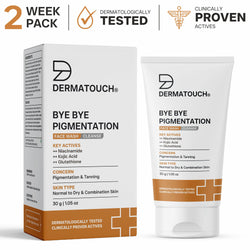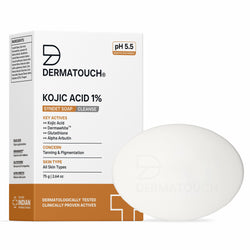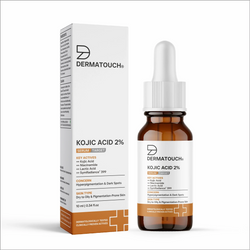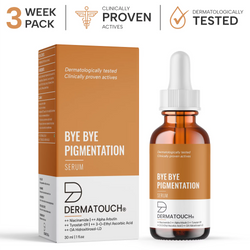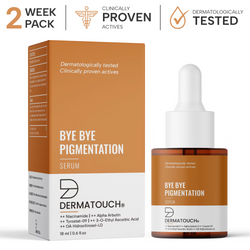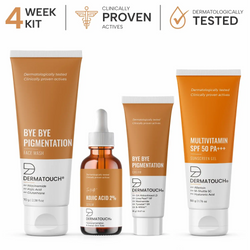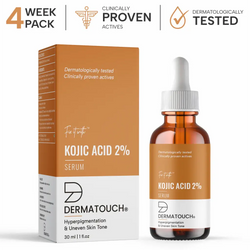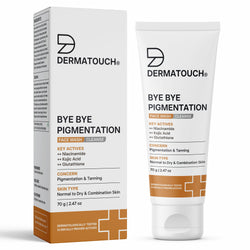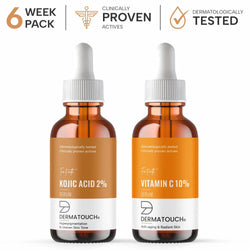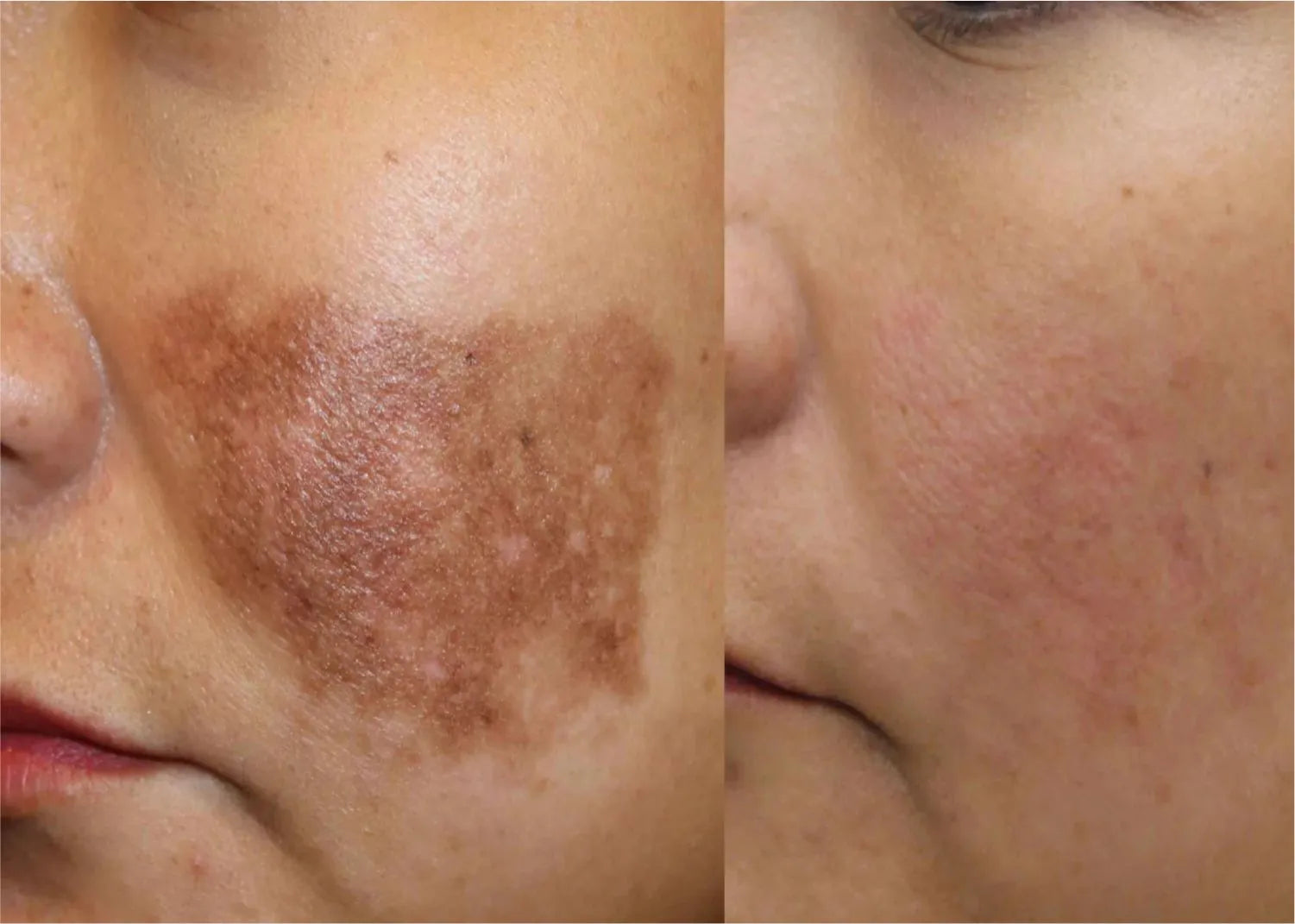
How to remove pigmentation from face permanently
Removing pigmentation from your face permanently can be challenging, and it often requires a combination of treatments and a commitment to a long-term skincare routine. However, there are various treatments and strategies you can try to significantly reduce the appearance of pigmentation and maintain a more even skin tone. It's important to note that results can vary depending on the type and severity of pigmentation.
Types of Pigmentation
Hyperpigmentation means parts of the skin look darker than other areas. The skin makes too much melanin, which gives colour. Things that cause this are sun, hormone changes, or irritation. Types of hyperpigment include age spots, melasma, and marks from inflammation.
Hypopigmentation is when some areas of the skin are lighter than others. It happens because there is less melanin in those parts. Melanin is what gives colour to our skin. With hypopigmentation, there is a decrease in melanin production or distribution. This can cause conditions like vitiligo. Some fungal infections can also lead to hypopigmentation. Vitiligo makes patches of light skin appear. With fungal infections, the fungi affect melanin levels. Either way, hypopigment means lighter skin in certain spots.
Sun spots, or solar lentigines, are dark areas on skin exposed to lots of sunlight. They often appear as people age, varying in size. Too much UV from the sun causes these spots over time
Freckles are tiny, brown spots on the skin. They form when the skin makes extra color. People with lighter skin often get freckles. These spots show up most on areas of the body that get sun. Freckles happen because of more melanin in the Skin.

Causes of Pigmentation:
Changes in Hormones and Skin Color
RehumanizeWhen hormone levels change during pregnancy, menopause, or from other causes, it can affect how much melanin the body makes. This can lead to changes in skin colour. Doctors call this condition "melasma" or the "mask of pregnancy." Some sentences are short. Other sentences are longer to show high burstiness.
Genetics and Pigmentation
Your genes affect your chances of having pigmentation problems. Some groups are more likely to have certain skin color issues. This shows genes control skin color.
Simple Habits, Big Impact on Skin Color
What we eat, how stressed we feel, and habits like smoking or drinking alcohol affect our skin's health. Our skin's color can change. A diet with lots of fruits and veggies helps keep skin healthy. It prevents skin color changes. Antioxidants and vitamins from food are good for skin health.
Skincare Products and Pigmentation
Using skincare products with harsh ingredients or improper usage can exacerbate pigmentation issues. It's essential to choose products suited to your skin type and avoid ingredients that may cause irritation or allergic reactions.
Health Problems that Change Skin Color
RehumanizeSome health issues can make parts of your skin lighter or darker. Vitiligo makes patches of skin lose color. A wound or rash can leave darker areas too. If you notice big changes, see a skin doctor. They can check what is causing it and give treatment options.
Let’s see How to remove pigmentation from face permanently
Consult a Dermatologist:
It's essential to consult a dermatologist for a thorough evaluation of your skin and to determine the type and cause of pigmentation. They can recommend appropriate treatments tailored to your specific condition.
Prescription Creams:
Dermatologists may prescribe topical creams containing ingredients like hydroquinone, retinoids, corticosteroids, or kojic acid to lighten pigmented areas.
Vitamin C Serum:
Topical serums with vitamin C can help reduce pigmentation and even out skin tone. These are available over-the-counter.
Chemical Peels:
Chemical peels involve the application of a chemical solution to remove the top layer of skin, which can reduce the appearance of pigmentation. This should be done under the guidance of a dermatologist.
Microdermabrasion:
Microdermabrasion is a non-invasive procedure that exfoliates the skin's surface to improve pigmentation and overall skin texture. Multiple sessions may be required.
Laser Therapy:
Various laser treatments, such as IPL (intense pulsed light) and fractional laser, can target pigmented areas and stimulate collagen production. These treatments should be performed by qualified specialists.
Microneedling:
Microneedling involves tiny needles creating controlled micro-injuries in the skin, which can help reduce pigmentation and promote collagen production.
Sun Protection:
The most critical step in managing pigmentation is sun protection. Use a broad-spectrum sunscreen with at least SPF 30 daily, even on cloudy days, to prevent further pigmentation.
Skincare Routine:
Follow a consistent skincare routine that includes gentle cleansing, moisturizing, and using products with ingredients like niacinamide, alpha hydroxy acids (AHAs), or licorice root extract, which can help improve pigmentation over time.
Avoid Picking or Scrubbing:
Avoid picking at your skin or using harsh scrubs, as this can worsen pigmentation and potentially cause scarring.
Healthy Lifestyle:
Maintain a healthy lifestyle with a balanced diet and adequate hydration. Avoid smoking and excessive alcohol consumption.
Suggested Products
View all-
Normal Skin
Bye Bye Pigmentation Face Wash
Anti-pigmentation & dark spots reduction4.78
Rs. 149 MRP: Rs. 175 Targeted Pigmentation Face Wash for Clear, Even-Toned Skin This foaming face wash is formulated with Kojic Acid Globules, Niacinamide, and Glutathi...
View full detailsRs. 149 MRP: Rs. 175 -
All Skin Type
Kojic Acid 1% Soap
reduce hyperpigmentation4.66
Rs. 149 MRP: Rs. 170 Brightening & Protective Soap for Even, Radiant Skin Dermatouch Kojic Acid 1% Soap is a dermatologist-tested formula designed to brighten skin,...
View full detailsRs. 149 MRP: Rs. 170 -
Normal Skin
Kojic Acid 2% Serum
Best For Hyperpigmentation & Uneven Skin Tone4.73
Rs. 199 MRP: Rs. 330 Targeted Serum for Hyperpigmentation & Even Skin Tone Dermatouch Kojic Acid 2% Serum is a dermatologist-tested formula designed to reduce hyper...
View full detailsRs. 199 MRP: Rs. 330 -
All Skin Type
Bye Bye Pigmentation Serum 30ml
Reduce Pigmentation4.75
Rs. 599 Targeted Serum for Brighter, Even-Toned Skin Dermatouch Bye Bye Pigmentation Serum is a dermatologist-tested formula using clinically proven active...
View full detailsRs. 599 -
All Skin Type
Bye Bye Pigmentation Serum
Reduce Pigmentation4.75
Rs. 299 MRP: Rs. 399 Targeted Serum for Brighter, Even-Toned Skin Dermatouch Bye Bye Pigmentation Serum is a dermatologist-tested formula using clinically proven active...
View full detailsRs. 299 MRP: Rs. 399 -
Combination Skin
Pigmentation & Blemishes Kit
Anti-Pigmentation & Dark Spots Reduction4.66
Rs. 1,678 Complete Skincare Solution for Bright, Even, and Healthy Skin Dermatouch Pigmentation & Blemishes Kit is a dermatologist-tested, multi-step sys...
View full detailsRs. 1,678 -
Normal Skin
Kojic Acid 2% Serum - 30ml
Best For Hyperpigmentation & Uneven Skin Tone4.33
Rs. 500 Dermatouch Kojic Acid 2% Serum is formulated the best way to help with the hyperpigmentation caused by sun exposure. The serum hinders the activity...
View full detailsRs. 500 -
Normal Skin
Bye Bye Pigmentation Face Wash
Anti-pigmentation & dark spots reduction4.78
Rs. 349 Targeted Pigmentation Face Wash for Clear, Even-Toned Skin This foaming face wash is formulated with Kojic Acid Globules, Niacinamide, and Glutathi...
View full detailsRs. 349 -
Combination Skin
Hyperpigmentation & Anti-Aging Serum Kit
For Anti-Aging And Radiant Skin4.78
Rs. 1,000 Dermatouch Kojic Acid 2% Serum is formulated the best way to help with the hyperpigmentation caused by sun exposure. The serum hinders the activit...
View full detailsRs. 1,000


